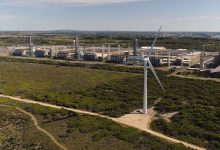Mining Closures in Romania: Incentives and Impediments
Romania’s oldest mines in the Jiu Valley, Lonea and Lupeni mines, will enter the closure process this year after several postponements.
In November 2016, the European Commission approved state aid to finance the closure of the two mines in 2018, but the deadlines were not met. The closure plan has been updated and re-notified to the European Commission, with new deadlines set, 2020 for Lonea and 2021 for Lupeni. These deadlines have not been met either, and now the Ministry of Energy has prepared a new draft government decision to close them.
The two mines belong to the Hunedoara Energy Complex, which has been in insolvency for several years. In the meantime, its Mintia thermal power plant has been sold to Mass Global Energy Rom, part of Mass Group Holding, a major global energy producer with capacities of over 8,500 MW.
State aid worth RON 27 million from the Ministry of Energy budget will be granted for this operation this year. This amount will cover costs of severance payments to employees who lose their jobs (RON 186 thousand); costs of vocational retraining (RON 60 thousand); costs of recultivation of areas (RON 26,996 thousand).
CE Hunedoara’s failure to comply with the conditions undertaken in order to obtain state aid to facilitate the closure of uncompetitive coal mines leads the Ministry of Energy to apply the necessary measures to recover it.
State aid for 2023 is a support measure that is part of a wider plan of measures, including the granting of state aid, aimed at closing the uncompetitive mines of the insolvent Complexul Energetic Hunedoara S.A. These support measures are granted up to and including 2024 and have been notified to and authorised by the European Commission.
Safe mine closures take several years
The closure of the two exploitations requires extensive safety work to avoid the risk of self-ignition.
According to a study conducted by the Główny Instytut Górnictwa, Poland, which validated the assessment and risks previously identified by the Romanian experts, coal has to be mined for a period of about 4-6 years in the process of mine closure, which requires the extension of the closure period of Lonea and Lupeni mines. Thus, for the two mines, the work to secure the hard coal deposit will be carried out until 31 December 2024, followed by the final closure and land greening works in 2025-2026.
Also, given the similar nature of the coal beds at the Vulcan and Livezeni mines, also part of CE Hunedoara, measures similar to those established for the Lonea and Lupeni mines are required. The Vulcan and Livezeni mines are mining exploitations located in the same coal basin of the Jiu Valley and present the same risks of coal self-ignition.
According to the results of the Polish study, the safe closure of the Livezeni and Vulcan mines can be achieved through the mining of hard coal by 2030, while the final closure and land greening works will be carried out by 31 December 2032.
In Lupeni, the first coal mine was opened in 1881, and since then mining activity has been almost uninterrupted here.
Deadlines approved in 2022
In June 2022, the Government adopted the Emergency Ordinance on the decarbonisation of the energy sector. According to it, in the event of an energy crisis, it may be decided to postpone the closure of some coal-fired power plants or restart some energy groups.
Basically, with this decarbonisation ordinance, the closure and safety period for coal mines, where self-ignition can occur at any time, has been extended. In the case of the two mines, it could be decided – in the event of a crisis situation – to extend their closure until 2026, as well as to close and secure the Livezeni and Vulcan mines until 2032, in parallel with the Paroseni power plant.
Government seeks to replace mining
After the great liquidation of the mining sector in the late 1990s, the Jiu Valley region never recovered economically, which led to massive depopulation and an ageing resident population.
The liquidation of the last remnants of mining in the coming years will put even more pressure on the inhabitants of these areas, in the absence of viable livelihood alternatives.
Last year, the government launched the “Strategy for the economic, social and environmental development of the Jiu Valley (2022 – 2030)” in an attempt to revive the area. To implement it, the Government will be able to use non-reimbursable European funds made available through the Just Transition Mechanism for regions in energy transition, a fund worth €17.5 billion, but which will generate investments estimated at €30-35 billion, plus European money from the Innovation Fund, Modernisation Fund etc.
The new strategy has a lot of European money at its disposal, around €284 million, the only question mark being the authorities’ ability to develop the projects needed to attract it. Since the 1990s, 11 mines have been closed, nine of which have been greened up and two others – Uricani and Paroșeni – are in the process of being greened up.
The Lonea Mining Exploitation and the Lupeni Mining Exploitation are in a closure programme in accordance with Decision 2010/787/EU, supplemented by Decision C(2018) 1001 final, starting on 16 July 2019, with the prospect of completing underground closure works by the end of 2026, continuing with the rehabilitation works, recultivation of the surfaces by the end of 2027, it is stated in the Strategy for the economic, social and environmental development of the Jiu Valley (2022-2030) published by the Romanian Government.
Insufficient tax incentives to attract investors
In order to support the efforts to attract investment in the Jiu Valley, the possibility of higher state aid will be examined, and tax incentives will be considered. This kind of approach is not new, as the measure has been tried in the past when the Jiu Valley was declared a disadvantaged area and the investments made benefited from a preferential tax regime.
However, this measure has proved insufficient to attract investors for several reasons. The area lacked a well-qualified workforce, poorly developed transport and social infrastructure etc.
The Government is betting heavily on the development of tourism in the Jiu Valley, but although the area has potential, this sector will be insufficient to absorb the workforce, say the mining unions. At the end of last year, about 6,200 unemployed people were officially registered in the area, of which those with a high school education had the highest share.






